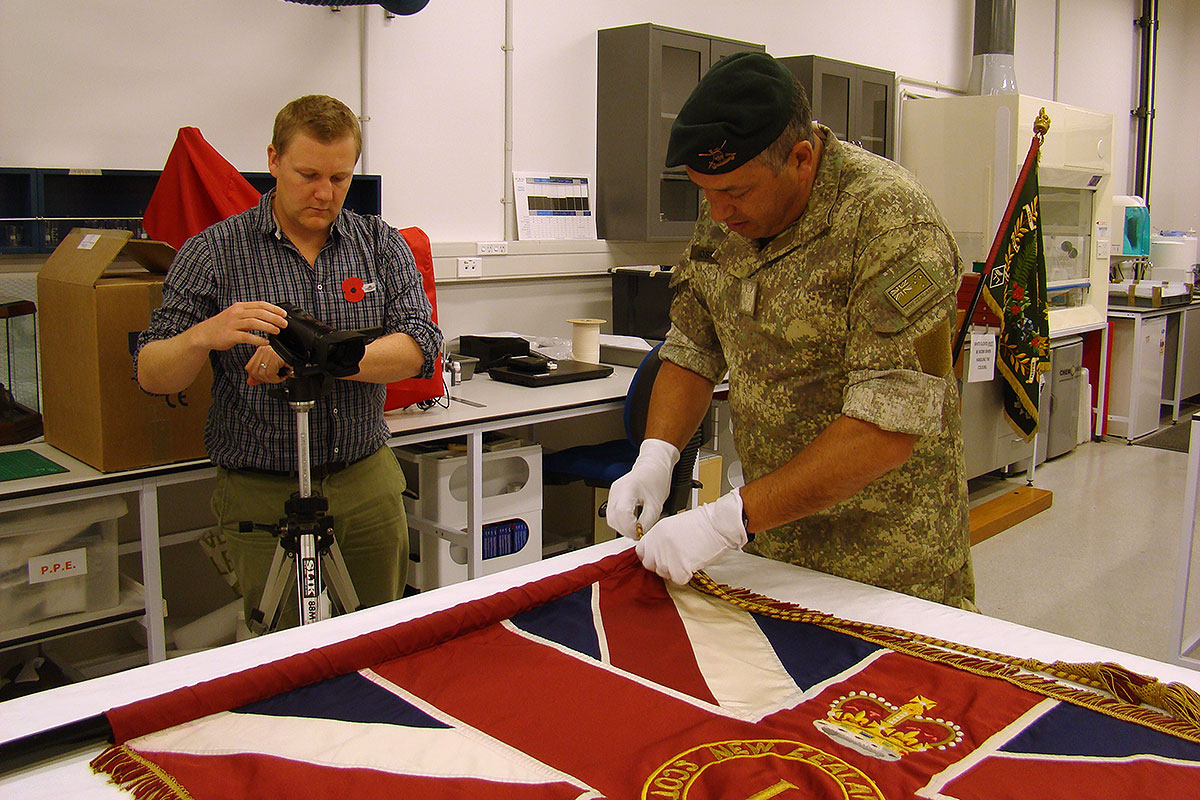Saturday 16th April 2016 was a very important day for the museum. The colours of the NZ Scottish Regiment were deposited at the museum.
The unit was formed on 17 January 1939 and was known as the 1st Bn, NZ Scottish Regt and they were mobilised during the outbreak of WWII. The unit underwent many re-organisations until the Scottish Regiment (NZ Scots) was disestablished in 1990. In 2013 the Chief of Defence Force formally disbanded the unit.
Credit: Otago Daily Times
Of course the parade was the culmination of many years of behind the scenes negotiations resulting in the colours coming into the TOSM collection as long term loans. There are two colours, the Queen’s Colour and the Regimental Colour. Since 1751 Infantry regiments have been allowed to carry two Colours and this arrangement continues to the present day. The colours are the symbol of the spirit of the regiment because they bear the battles honours and badges granted to the regiment.
The colours are due to go back on display in the Military Gallery for Anzac Day, but before that can happen they have to pass through the Collections Department for condition reporting and mount making.
Condition reporting is a thorough methodical examination of an object which can range in magnification from eyes to electron scanning microscopes. For the purposes of the condition reporting of the colours an optivisor and good light source were used. Along with a written report detailing any damage or missing elements, a photographic record was also taken. All this information is stored in our collections database, Vernon, and the images stored on our server. This information will be used as a reference point for any changes in the condition of the Colours.
Sometimes we get help from external sources who have a familiarity with the object. In this case it was Warrant Officer Class One, Gerry Costello Army Reserve Sergeant Major, New Zealand Army. He showed us how to remove and reinstate the tassels and cords on the colours. Our Exhibitions Developer, Will McKee, was on hand to make a video to be used as an aide memoire in the future when then colours will be removed from the pikes for storage.
In the image you’ll see Gerry is wearing white gloves. From a museum perspective this is good practice as they act as a barrier between our skin and the textile. However, in this case they also have a symbolic purpose. Regimental colours are consecrated before use, and their association with heroic deeds causes them to be regarded with veneration, therefore they are always handled with white gloves.
Regimental colours are usually laid up in churches and over time will disintegrate, so it a great honour for the museum to be entrusted with the care and preservation of these colours.

Will filming Gerry removing the cord from the Queens Colour. Credit line: Toitū Otago Settlers Museum